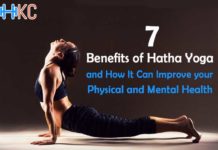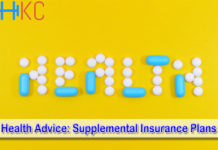Yoga offers best stretching exercises which should be done after the workout. These exercises tune the lower part of the body, opens the knees, calves, Achilles, and ankles, build flexibility and prevent injury.
Let us find out these amazing Yoga asanas:
Janu Sirsasana (Head To Knee Forward Bend)
Janu Sirsasana is a primary series of Ashtanga yoga, which increases the flexibility of the hamstrings, thighs, back arms, shoulders and hip joints. It soothes both the heart and mind and gives stretch to the entire body. It also helps the body to do deeper forward bend. In this pose, you might face touching the head to the knee as challenging, but important is to feel the stretch in the torso.
If you are a beginner, it is advised to sit on a folded blanket or a soft pillow to raise your buttocks and to get into the pose. If you are doing this pose for the first time, remember to bring your bent foot beside your straight leg and it should not slight under the straight leg. And when you look down you should be looking towards the sole of the foot. Secondly press the heels of the bent food towards the inner groin of the leg kept straight.
Parsvottanasana (Intense Side Stretch Pose)
Known as Side Stretch in English, or Pyramid pose, it tones the legs, reduces lower back pain and also generates stress. Steady your position for generating inner space, which would help you to fold. Lengthen yourself, spread and soften deeply into the pose. When you bend forward with the feet towards the narrow baseline, you would feel like falling, but as you establish the outer balance and structure the alignment, you could then easily release yourself. It is a very complex and challenging posture that provides exceptional opportunity to practice it. This pose requires deep concentration and clarity of mind.
Pada Hastasana (Forward Bend Pose)
It is hand to foot stretching pose as it gives considerable stretch to your thigh muscle, and lower back. Pada means foot and hast means hand, this asana means to retain in posture while staying firmly and comfortably for the longer period. It is also a part of the series of Suryanamaskara. In this pose, your hand is slid under the soles of your feet. It provides good stretch to your hips, back and hamstrings. It also stimulates your second chakra which is situated between the pubis and bellybutton thus enhancing rigidity and creativity.
Ustrasana (Camel Pose)
It is a back bending posture which can open Anahata (Heart Chakra). This posture gives strength and flexibility to the body and also improves digestion. If you are doing this pose for the first time, it might not be easy for you to touch your feet with your hands without causing strain towards your back and neck. You can switch your toes and elevate your heels. If you still find difficulty reaching it, use the wooden block and keep both your hands on them. This asana opens the chest and frontal areas of the torso, makes the back and the shoulders strong and increase flexibility of the spine. It is the best stretch which opens the frontal areas of the body, pectoral muscles, and hip flexors. It also tones the limbs, chest, thigh and abdomen, preferably the entire frontal area and the sides of the body. The asana also improves the respiratory system, circulatory system, the lymphatic, skeletal, endocrine and digestive system of the body.
Eka pada rajakapotasana (One Legged King Pigeon Pose)
It is commonly known as pigeon pose or prep in which you have to keep the back leg straight and folded forward just above the front leg. It is basically a hip opener. The difficulty of this pose lies in how it is positioned, while one hip is in the extended position while the other has to be in flexed and rotated position. This pose helps in opening the chest and shoulders that would help you stretch and make you extend your arms overhead and hold the foot without causing compression of the spine or collapsing. This posture is bit difficult so you should develop a sequence around this pose and practice it. By regularly practicing you can easily master it.
Pawanmuktasana (Wind Release Pose)
It is very easy to pose and best for the beginners. The term Pawanmuktasana means to relieve or release the abdominal gas and ease digestive disorders but it also calms the mind and body. It also tones the muscles of the abdomen and lowers back which energizes the body for intense workout and do more complex yoga poses. And best of all it puts very little stress on the body.
While doing this pose, we can feel the muscles being used and activated. Minimum contraction occurs that involves toning the flexes, and most of the muscles known as antagonists cause stretch to the reflexes. The stretching builds flexibility, tones the muscles, reduces contraction and let go the physical tension. When this pose is done with awareness, we can feel each moment is broken down and we got aware of the muscles being stretched and contracting and which are being used for retaining the stillness of the body.
Balasana (Child Pose)
Balasana also known as child pose gives complete stretch to the glutes, hips, lower back, thighs, knees, and ankles. It also provides complete relaxation to the spine, shoulders, and neck and gives massage to the internal organs. It is a great way to get into resting position, and feel grounded. The pose also stretches the hips, thighs, and ankles while reducing fatigue and stress. It gently relaxes the muscles towards the front of the body and towards the back torso. The pose also soothes and calms the brain making it a most therapeutic pose to reduce stress. When you perform by giving support to the head and torso, it helps to provide relief towards the back and neck pain and provides balance and equanimity to the body.
Halasana (Plow Pose)
Halasana also known as the Plough Pose is similar to a wooden plow that is traditionally used to plow the fields. It is one of the most important yoga asanas which helps in reducing the back pain and stretches the spine and especially the upper spine. This asana helps in reducing the rigidity of the back muscles, improving the muscle tone and makes the back, abdominal and the leg muscles stronger. It also helps in stretching the spine nerves, provides stretch to the spine and improves the elasticity and function of the body. This asana also helps in improving the endocrine system and entire body functions stimulate the immune system and control the breathing movements in diaphragm.
Supta Baddha Konasana
It is one of the best restorative poses that relax the mind, body, and spirit. This pose relaxes the abdominal muscles, gives stretch to the groin and inner thigh muscles, improves the blood flow to the pelvis area, opens the chest and allow for deeper breathing and oxygen flow. Once you are in this pose you would like you are on a vacation for 15 to 20 minutes. This pose gives a stretch to the inner thighs, opens the hips, increases circulation and eliminates reproduction in the lower belly. You can learn this asana through yoga teacher training India and do this asana either with props or without props but if you practice it with blankets, bolsters or props, you would feel you would get added advantage. It provides support to the body from all the angles and gives complete relaxation.
Do these poses after the workout and get energized and motivated again for the next day workout schedule.
Summary: The article narrates the benefits of many several yoga asanas which you should do after the intense workout. It has scientifically proven that our body requires relaxation and stretch and these poses give the adequate results which would make you energized and rejuvenated again.























